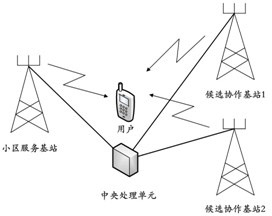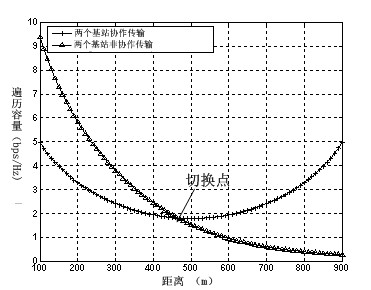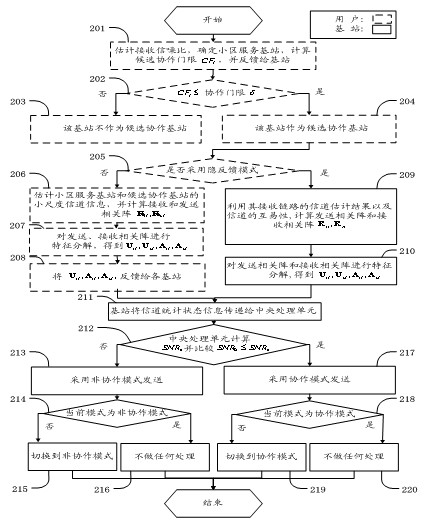Self-adaptive switching method of multi-cell cooperative downward transmission modes
A technology of adaptive handover and multi-cell cooperation, applied in diversity/multi-antenna systems, spatial transmit diversity and other directions, which can solve the problems that the base station is difficult to obtain channel state information, wireless channel frequency offset, etc.
- Summary
- Abstract
- Description
- Claims
- Application Information
AI Technical Summary
Problems solved by technology
Method used
Image
Examples
Embodiment Construction
[0034] In order to make the object, technical solution and advantages of the present invention clearer, the present invention will be described in detail below with reference to the accompanying drawings and specific embodiments.
[0035] The method for switching the multi-cell coordinated downlink transmission mode provided by the embodiment of the present invention can determine different transmission modes according to different channel state information and user locations: a cooperative transmission mode and a non-cooperative transmission mode. While reducing the information interaction overhead between base stations, the throughput of the cell edge is improved to meet the requirement of high spectrum utilization. The structure of cell serving base station and candidate serving base station is as follows: figure 1 shown.
[0036] Such as image 3As shown, a flow chart of a multi-cell coordinated downlink transmission mode switching method provided by an embodiment of th...
PUM
 Login to View More
Login to View More Abstract
Description
Claims
Application Information
 Login to View More
Login to View More - R&D
- Intellectual Property
- Life Sciences
- Materials
- Tech Scout
- Unparalleled Data Quality
- Higher Quality Content
- 60% Fewer Hallucinations
Browse by: Latest US Patents, China's latest patents, Technical Efficacy Thesaurus, Application Domain, Technology Topic, Popular Technical Reports.
© 2025 PatSnap. All rights reserved.Legal|Privacy policy|Modern Slavery Act Transparency Statement|Sitemap|About US| Contact US: help@patsnap.com



